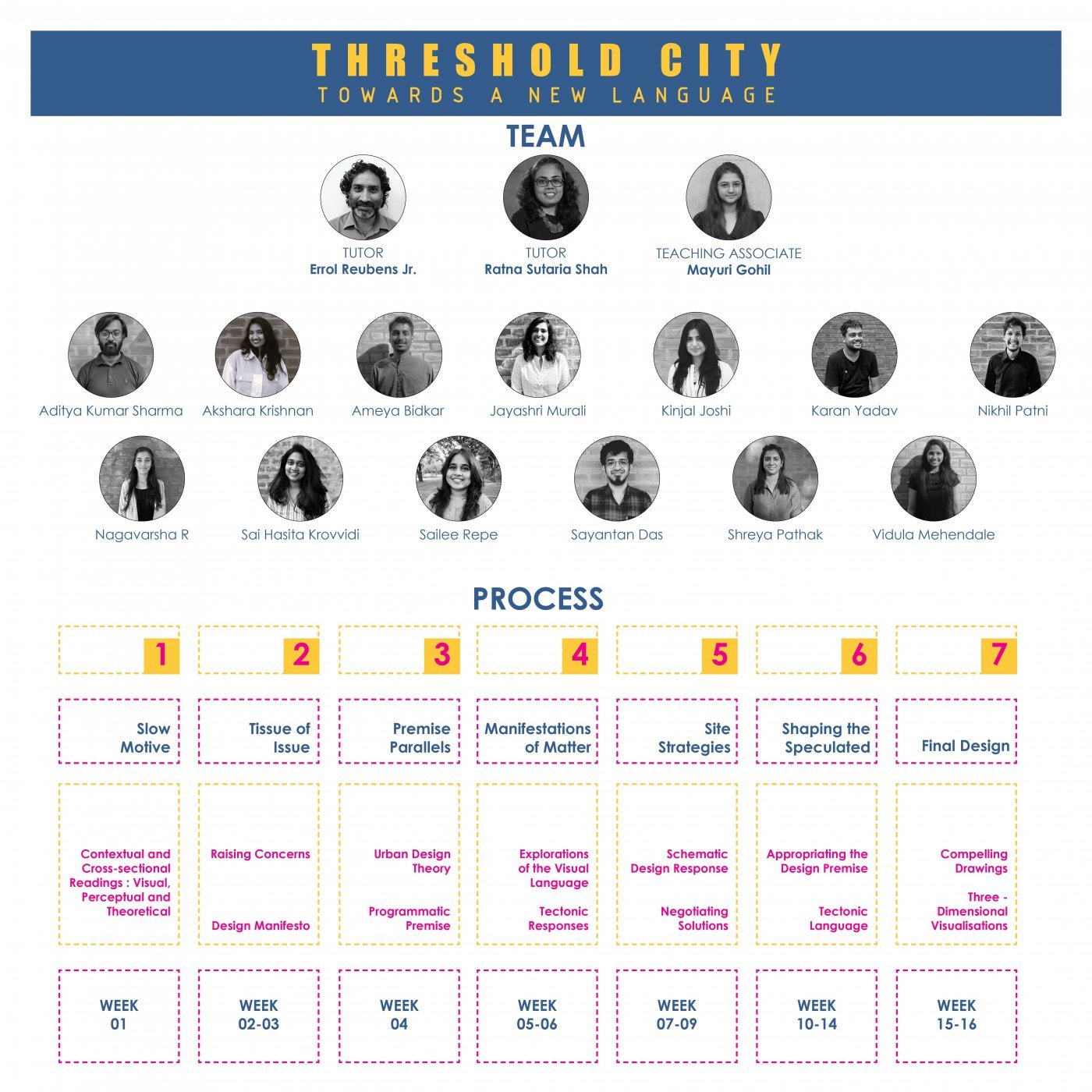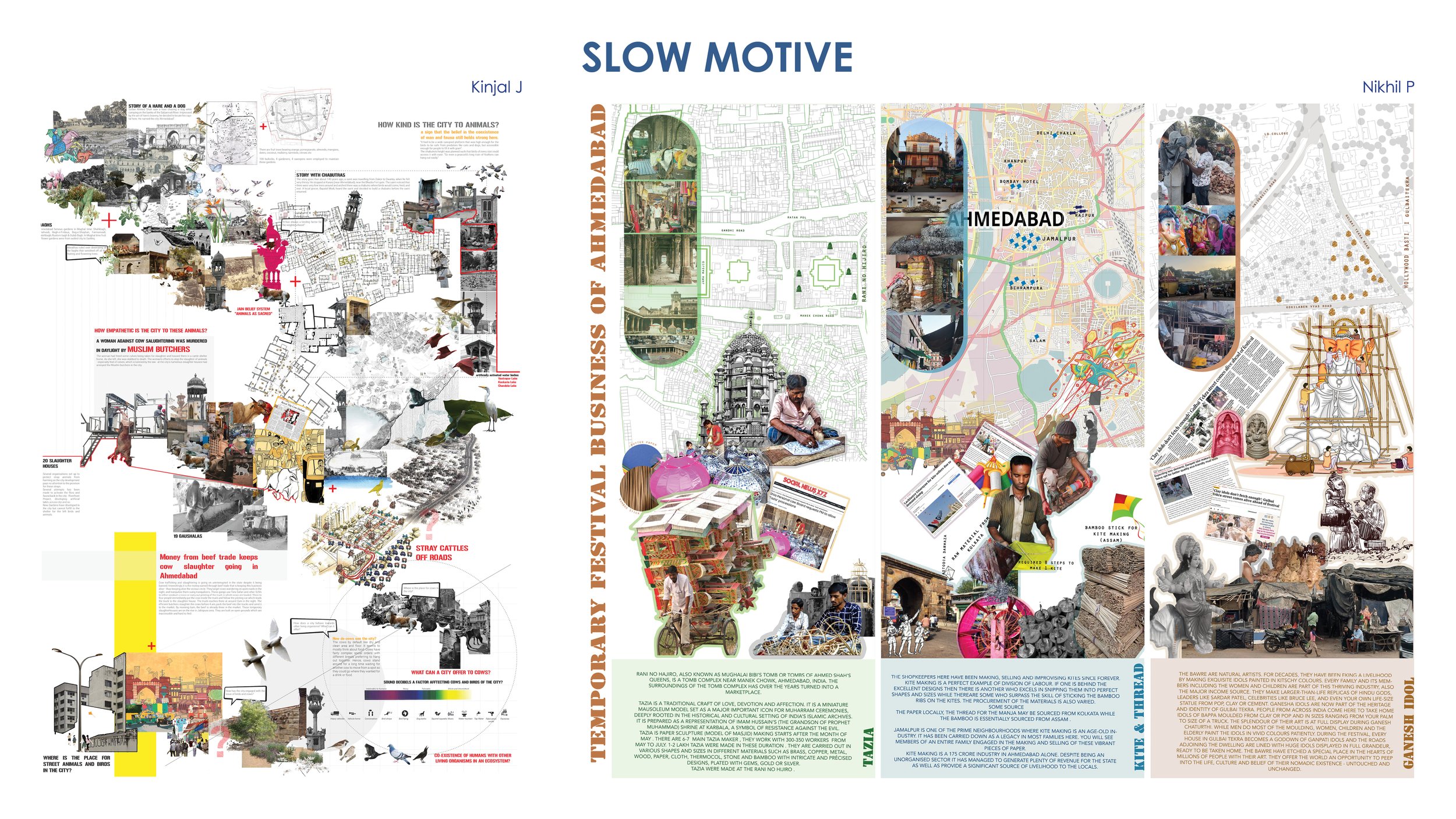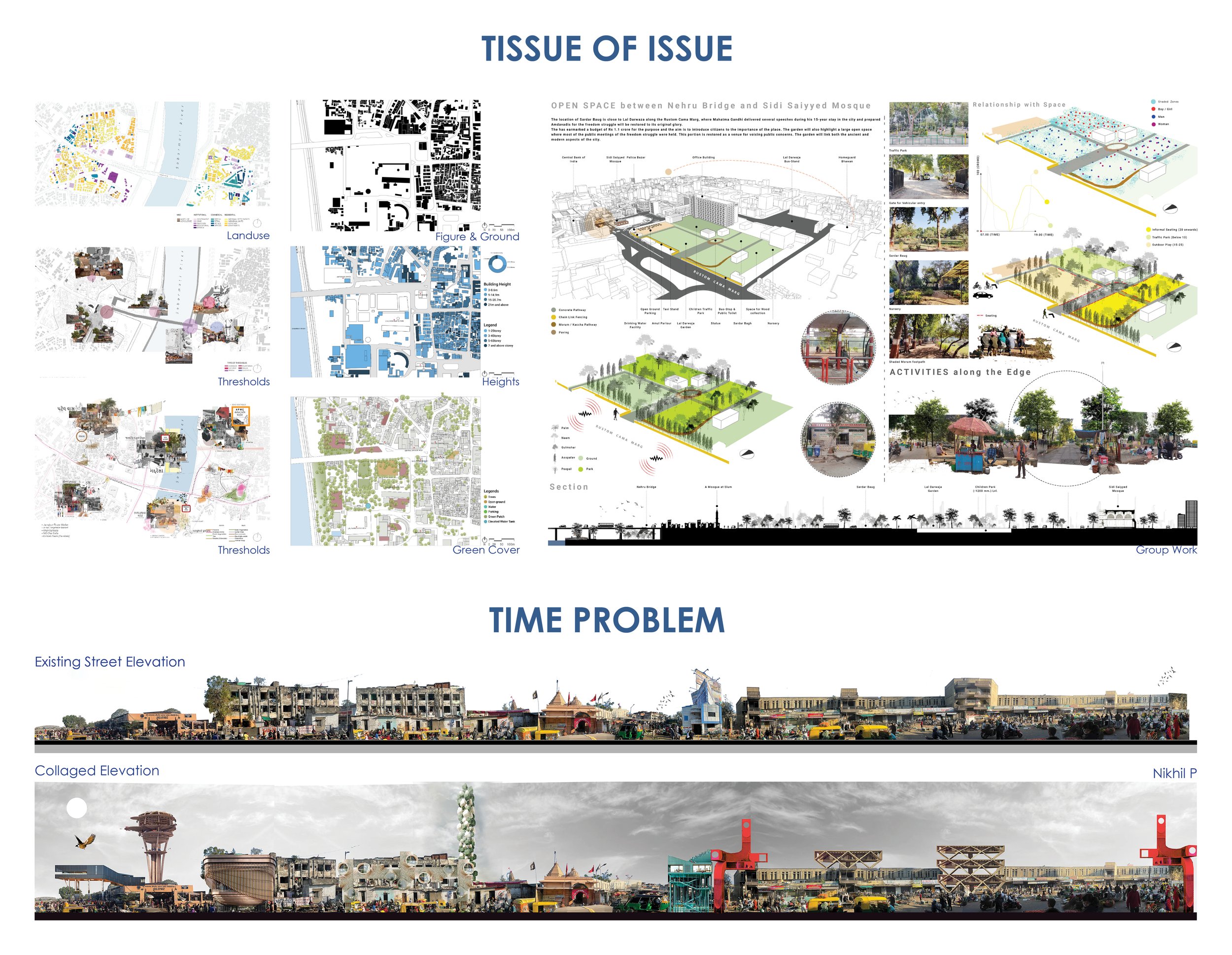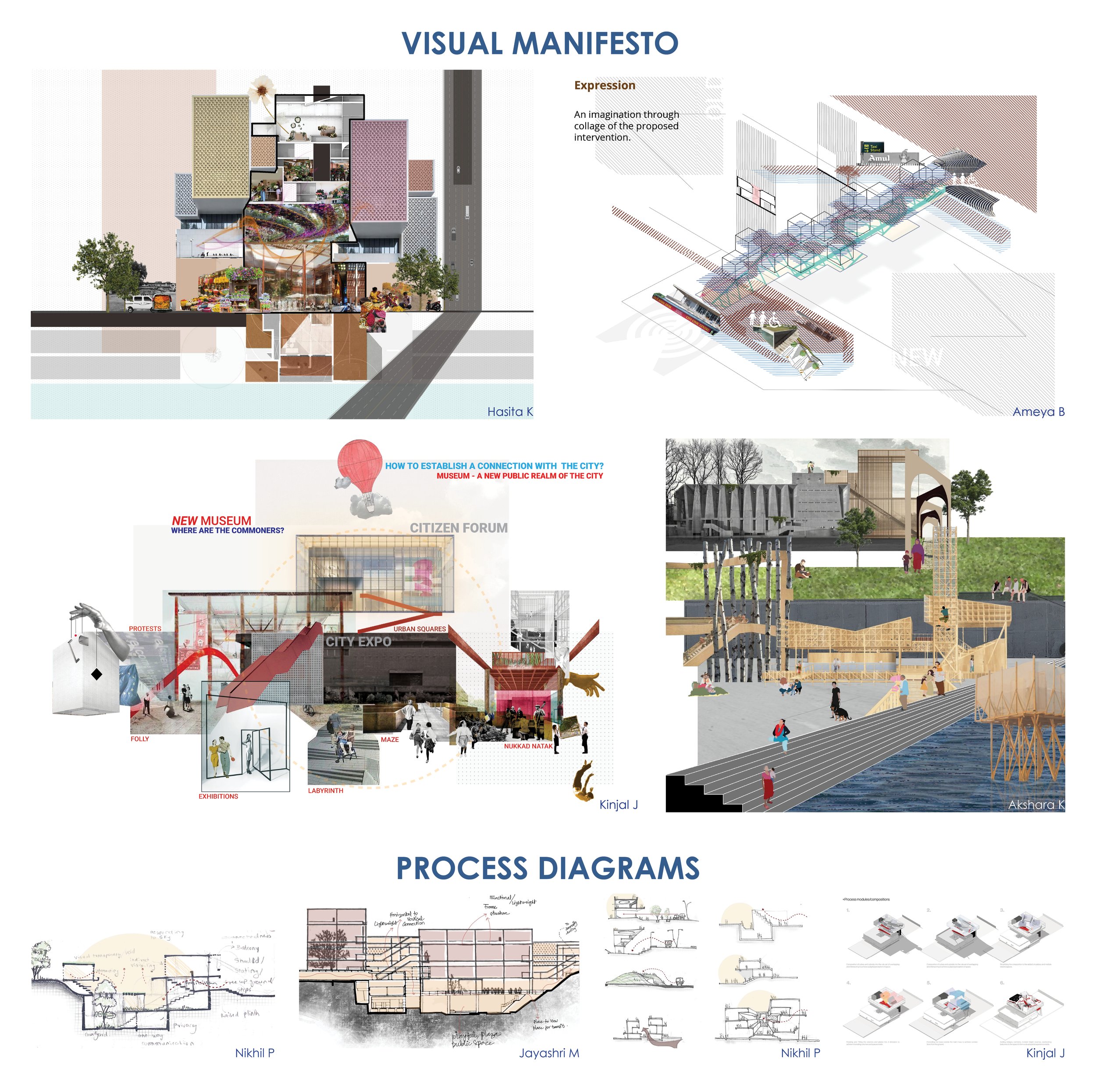To combat universal looking cities (Supermodernism), a new architectural language needs to be developed; one that differentiates. History and context help. Hence, the threshold of the old and the new assists in defining a response, that characterises the city.
Should tradition be imitated (New-Urbanism)? Should we critically learn from the past, creating a prosthetic with the present (Critical-regionalism)? Should we mutate all our learning to a mixed identity kedgeree approach (Hetero-architecture) to transform our cities?
We tested these theories to arrive a language to define the threshold city, transforming from the old to the new.
Errol Reubens & Ratna Shah, CEPT University, 2023




